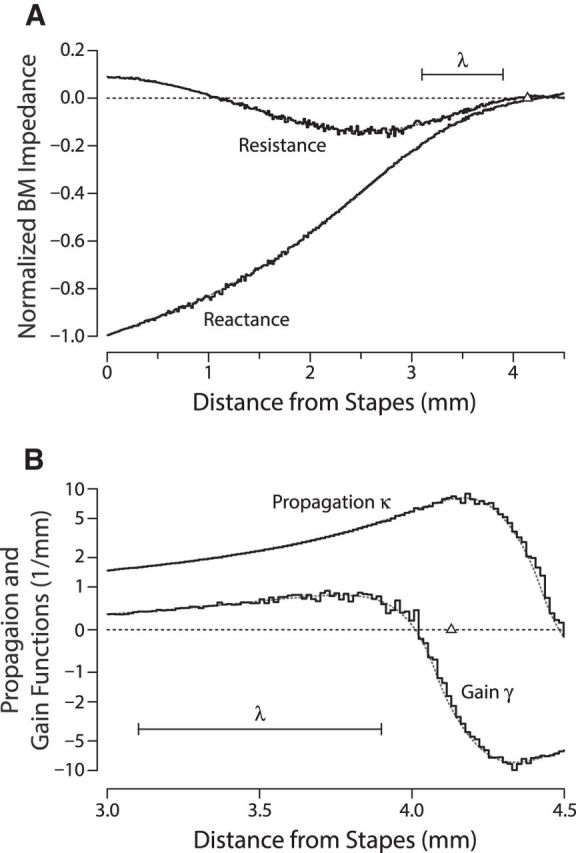Figure 1.

Effect of micromechanical irregularities on the BM impedance and complex wave number of the traveling wave. A, Real and imaginary parts (resistance and reactance, respectively) of the model BM impedance versus cochlear location at a fixed stimulus frequency (∼8.5 kHz). The impedance is shown normalized by its magnitude at the base (x = 0). B, Real and imaginary parts (propagation and gain functions, κ and γ, respectively) of the corresponding wave number in the region near the peak of the traveling wave. In each panel, values are shown for models both with (irregular solid line) and without (smooth gray dotted line) micromechanical irregularities introduced by jittering the poles of the BM admittance randomly with position. The triangle along the abscissa (Δ) marks the location of the peak of the traveling-wave envelope, and the scale bar (λ) indicates the size of the wavelength at this location. Note that the scales along the two abscissas differ: A shows the BM impedance throughout the basal region, whereas B zooms in and shows the wave number near the wave peak where the principal scattering occurs. To facilitate representation of the small perturbations in gain, the scale along the y-axis in B has been made linear for |y| < 1 and logarithmic elsewhere.
